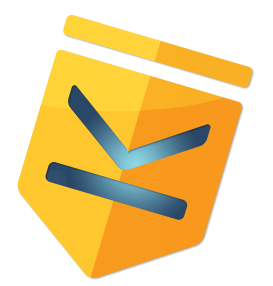Summary
Last week, the Kynetx shareholders, on recommendation from the Board of Directors, voted to dissolve Kynetx. This article is about what comes next. The short answer is a new birth.

Steve Fulling and I started Kynetx in 2008. The underlying technology, a rules engine, was originally designed to modify Web pages "at the glass" or, in other words, in the browser. We did that in various ways: planting tags, using Information Cards, and with the Kynetx Browser extension. We did some interesting things, had some great partners, and good customers. But ultimately, we weren't a mobile solution and there was no good way to deploy our browser-centric business model on mobile phones. Meanwhile mobile was where all the excitement was. This made it hard to get customers and raise money.
So we pivoted. Starting in 2011, we started to focus more on using our technology to create contextual experiences outside the browser and, more and more, that meant the Internet of Things. My book on Kynetx technology, The Live Web, was written during this transition and looking back, I can clearly see our developing ideas in the structure of the book. We did a Digital Asset Grid pilot for Swift in this new mode, built a personal inventory system called SquareTag that I still use, and then successfully completed a Kickstarter campaign for connected-cars called Fuse.
Along the way we had a lot of fun, worked with a lot of great people, and came close to the brass ring a few times. But Kynetx's runway finally ran out in 2014. We completed the Fuse kickstarter the first part of November 2013 and were very excited about the possibilities. We also had just signed a contract to complete a Guard Tour application using SquareTag technology. Then, at the end of November 2013 tragedy struck: Ed Orcutt, my chief collaborator and our lead developer died. In addition to the emotional toll that Ed's death caused for all of us, it also cost us dearly in momentum and ability to quickly get things done. In hindsight, if we'd executed perfectly and taken some very bold steps, we might have made it through, but we didn't. And we ran out of money before we could complete and deliver Fuse.
We did ultimately manage, with the help of credit cards and some friends and family, to deliver Fuse to Kickstarter backers in October of 2014, about six months later than we'd originally planned. By that point Kynetx had no employees, a pile of debt, and little hope for partnerships and revenue. The writing was on the wall and I clearly saw that we were going to have to find a way to unwind everything cleanly while doing our best to keep commitments to creditors and customers.
On April 3, 2015 the Kynetx shareholders voted to dissolve the company. I proposed that a new entity I've created, Pico Labs, would assume the debt in exchange for the few tangible (servers) and non-tangible (IP) assets that Kynetx had. The shareholders agreed with that proposal too because it seems the best way to provide a soft landing for customers. Carvoyant, the partner who supplied Fuse devices and connectivity has agreed to take on customer obligations for Fuse owners. Those two developments should allow me to keep Fuse going as an open source project.
I still believe the ideas we developed for how the Internet of Things could work are valuable. In particular, I remain passionate about creating a true Internet of things rather than a mere CompuServe of Things. I continue, along with a set of intrepid students, to work on the the Kynetx Rules Engine (KRE) and picos. We recently released a new set of developer tools and this summer plan to completely refactor CloudOS to incorporate everything we learned building Guard Tour and Fuse.
Kynetx was a great experience, one I'll be forever grateful for. Steve and I had a lot of fun, worked with great people who we love, and supplied a living for ourselves and others. We built some great technology and used that to influence some important conversations. I'm thankful for the confidence our shareholders showed by investing in us, our customers showed by buying from us, our employees showed by giving us their enthusiasm and passion, and, most importantly, our families displayed by their continued belief and sacrifice. I'm sorry to have let them down. But while Steve and I made plenty of mistakes, as founders do, I'm confident we worked as hard as we could to make this work every day, year in and year out.
Steve is off on a new adventure: Chargeback Ops, building a great merchant-focused chargeback processing service. I'm involved as an investor and technical advisor. If you need chargeback services, be sure to contact him.
Personally, I'm fine. I'm mostly through the sad part now, although I do still occasionally get emotional about Kynetx ending. I've returned to BYU and I'm having great fun working on several great projects like the University API and Domain of One's Own. It feels good, after startup life, to have people and resources to really move quickly. BYU is in a good position, from an IT perspective, to concentrate on strategic projects rather than merely trying to keep the ERP system working. Consequently, I feel like I'm getting things done that make a difference and that feels good.




